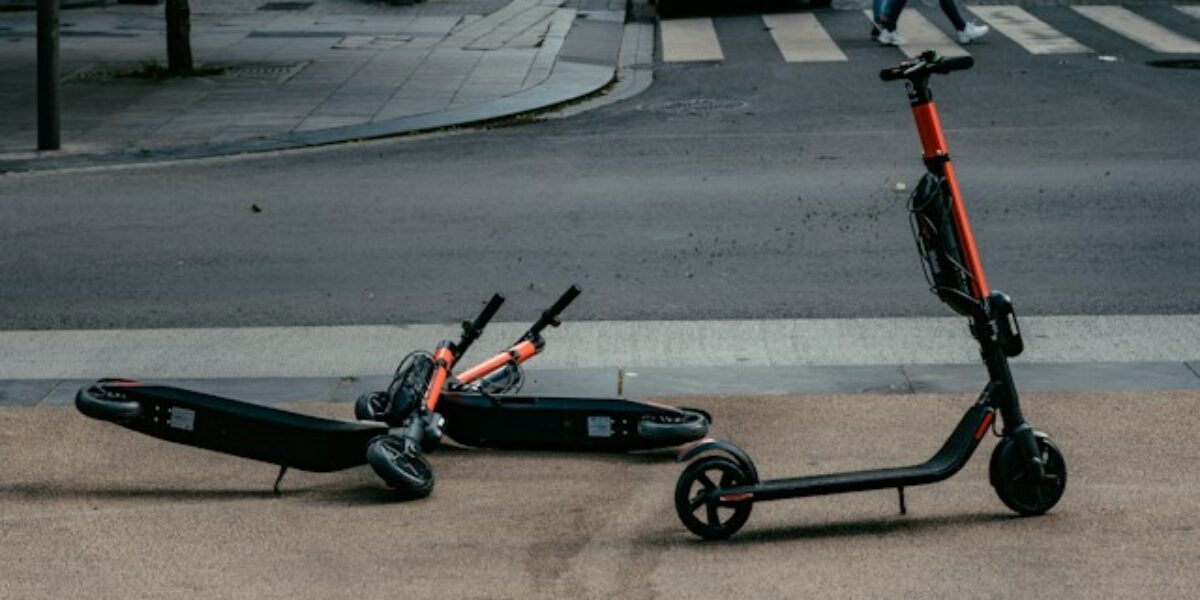Scooting around the facts
New report calls for better understanding and regulation of e-scooters
E-scooters continue to rise in popularity.
While the wild, wet and freezing weather of winter may curtail the two wheeled travel, sales remian high.
But for many, it is shocking that an illegal form of transport (except in certain Government set trial areas) is allowed to proceed without effective regulation or official penalisation.
All aboard
The growing numbers of of officially registered casualties is thought to be highly conservative. It is generally acknowledged that most incidents and injuries go unreported because of the age of riders, and the fact that the mode of transport is illegal in public.
This ongoing situation has led for repeated calls for the government to publish effective regulation and encourage the police to act to stop the illegal use of e-scooters.
A new report is repeating this call or the UK Government to tackle the ongoing issue. And to begin with, it wants better reporting of collisions and increasing opportunities for accurate casualty data to be collected.
Hitting the road
The report has been published by the Parliamentary Advisory Council for Transport Safety (PACTS), thanks to funding from The Road Safety Trust.
In the report, PACTS points out that:
- Records from the Government’s e-scooter rental trials, designed to “build robust evidence about the safety” cannot be readily matched with official DfT data; and,
- Casualty data must be collected more rigorously during the trials, recently extended to May 2026, to increase understanding of the hazard and danger of e-scooter use.
Building on extensive research into the safety of private e-scooters, PACTS has investigated the extent of under-recording of injury collisions involving e-scooters. It has done this by analysing data from two months in late 2021.
Analysis looked at 300 casualties recorded by hospitals across the UK, police records and data from the rental trials to identify matches between the different datasets.
The official data for all road traffic casualties, regardless of type of mobility, are based on police records.
This has long been recognised, and accepted, that when comparing the official data with the number of people presenting at hospital with an injury from a road traffic collision, there are discrepancies.
Understanding the reality
Recording the number of people injured through e-scooters allows for a better understanding of the risk of harm to the rider and other road users d.
This study found that:
- Fewer than 10% of casualties with any level of injury from a collision involving an e-scooter presenting to emergency departments were recorded in the official data;
- Around a quarter of those most seriously injured in collisions involving e-scooters were recorded by both the police and at hospitals.
In the report, comparing police and hospital e-scooter casualty datasets, PACTS calls on the DfT to:
- Improve the means of recording e-scooter casualties using the rental e-scooter schemes by updating guidance to operators and local authorities so data collection more closely aligns with recording systems the police use; and,
- Increase the opportunities for casualty data to be collected by issuing clear information to the public about the obligations of reporting road traffic collisions to the police, including those involving e-scooters on public roads and public places.
Changing environments
“Transport is an evolving environment,” states Margaret Winchcomb, PACTS deputy executive director.
“Technological development, as well as incentives from other policy areas, mobility choice is changing. Smaller, zero-emissions vehicles, such as e-scooters are popular, be they illegally ridden private vehicles or regulated rental e-scooters.
“For all, it is essential that the methods for measuring their hazard to riders and danger to other road users are consistent and robust so that safety is adequately understood. The Government should make the most of the extension of the rental trials, until May 2026, to improve and widen the way injuries from e-scooter collisions are recorded.”
Ruth Purdie OBE, chief executive of The Road Safety Trust, emphasises that e-scooters are here and the numbers using them is only increasing. “With more and more people using these devices, and with future policy still to be decided, it is vitally important that casualty data is as accurate as possible.”
The facts
According to official statistics based on final data, in 2022:
- there were 1,402 collisions involving e-scooters, compared to 1,352 in 2021
- of all collisions involving e-scooters, 341 included only one e-scooter with no other vehicles involved in the collision (single vehicle collision), compared to 324 in 2021
- there were 1,492 casualties in collisions involving e-scooters, compared to 1,434 in 2021
- of all casualties in collisions involving e-scooters, 1,149 were e-scooter users, compared to 1,102 in 2021
- there were 12 killed in collisions involving e-scooters (11 of whom were e-scooter riders) compared to 10 in 2021
- our best estimate, after adjusting for changes in reporting by police, is that there were 440 seriously injured and 1,040 slightly injured in collisions involving e-scooters, this compares to 418 and 1,006 respectively in 2021
There are estimated to be over 1 million e-scooter being regularly used on public roads and pavements in the UK. However, with no official register, this figure is also believed to be conservative. According to the Bicycle Association, as many as 360,000 were bought in 2020 alone.
In 2021, UK police seized just 5,500 e-scooters.





